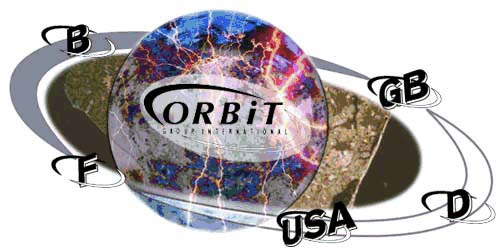 |
 |
ORBiT Sponsor Message |
|
|
|
|||
 |
|||
Loading up function keys
This month we’ll look
at function keys, those delightfully convenient buttons that allow
you to program up to eight different functions at a shot. Using
function keys to issue commands allows you to avoid menus inside your
programs, or forcing users to memorize a bunch of commands.
Over the years I developed a
series of macros, variables and procedures for easily loading up
function keys. You can take this as far as you want — depending
on what you want to do will control the complexity. To start, take a
look at Figure 1. KEY-POINT and KEY-BUFF will come into play later
when we use the macros to load the function keys.
Figure 1:
01 KEY-POINT PIC S9(9) COMP VALUE 0.
01 KEY-BUFF PIC X(300) VALUE SPACES.
*
01 SET-FKEY.
03 PIC X VALUE %33.
03 PIC X(02) VALUE '&f'.
03 FKEY-TYPE PIC 9 VALUE 2.
03 PIC X VALUE 'a'.
03 FKEY-NUM PIC 9.
03 PIC X(04) VALUE 'k16d'.
03 FKEY-LEN PIC 99 VALUE 02.
03 PIC X VALUE 'L'.
03 FKEY-LABEL PIC X(16).
03 FKEY-DATA PIC X(02).
03 PIC X VALUE %15.
*
01 KEY-ON.
03 PIC X VALUE %33.
03 PIC X(03) VALUE "&jB".
*
01 KEY-OFF.
03 PIC X VALUE %33.
03 PIC X(03) VALUE "&j@".
*
01 KEY1.
05 PIC X VALUE %33.
05 PIC X VALUE 'p'.
*
01 KEY2.
05 PIC X VALUE %33.
05 PIC X VALUE 'q'.
*
01 KEY3.
05 PIC X VALUE %33.
05 PIC X VALUE 'r'.
*
01 KEY4.
05 PIC X VALUE %33.
05 PIC X VALUE 's'.
*
01 KEY5.
05 PIC X VALUE %33.
05 PIC X VALUE 't'.
*
01 KEY6.
05 PIC X VALUE %33.
05 PIC X VALUE 'u'.
*
01 KEY7.
05 PIC X VALUE %33.
05 PIC X VALUE 'v'.
*
01 KEY8.
05 PIC X VALUE %33.
05 PIC X VALUE 'w'.
*
SET-FKEY contains the entire escape sequence to load a particular function key with a particular value. The FKEY-TYPE means we want to transmit the data with a carriage return. The FKEY-NUM is which actual function key we are loading. FKEY-LABEL is the value that will appear in the function key label, you have 16 characters that will show up in two rows of eight. The FKEY-DATA value is what will be transmitted to the computer when you press the key.
Here is an important bit. I use an FKEY-LEN of 2, and have predefined the data length to be a buffer of 2. You could make this 80 if you wanted. Many moons ago I decided to use the default value of the function keys as their actual value, this is why you will see KEY1 thru KEY8 defined as they are, it allows me to say something like IF MY-VAR = KEY4 THEN. Now you might say, “What the heck does pressing KEY4 mean?” Depending on how you code this, you would be right, it’s hard to tell. My style of coding makes it easy for me to tell.
KEY-ON and KEY-OFF will turn on or off the function key display respectively. I once used these a lot, and depending on the context, it might make sense to turn the keys on and off. I will turn them off if they aren’t applicable to remove the visual cue. Another point when using function keys, try to make sure that they only contain values that apply to the current field. There is nothing worse than having function keys on a field that don’t work, or get the wrong results.
Now let’s move on to the macros; take a look at Figures 2 and 3.
Figure 2
$DEFINE %PREPFKEY=
MOVE SPACES TO KEY-BUFF
MOVE 1 TO KEY-POINT#
*
$DEFINE %LOADFKEY=
MOVE !1 TO FKEY-LABEL
MOVE !2 TO FKEY-DATA
MOVE !3 TO FKEY-NUM
STRING SET-FKEY DELIMITED BY SIZE INTO KEY-BUFF
WITH POINTER KEY-POINT#
*
$DEFINE %SHOWFKEY=
STRING KEY-ON DELIMITED BY SIZE INTO KEY-BUFF
WITH POINTER KEY-POINT
SUBTRACT 1 FROM KEY-POINT
MULTIPLY KEY-POINT BY -1 GIVING KEY-POINT
CALL INTRINSIC "PRINT" USING KEY-BUFF, KEY-POINT, %320#
*
Figure 3
%PREPFKEY.
%LOADFKEY("Sessions "#,KEY1#,1#).
%LOADFKEY(" Active Inactive"#,KEY2#,2#).
%LOADFKEY(" "#,KEY3#,3#).
%LOADFKEY(" View LogFile "#,KEY4#,4#).
%LOADFKEY(" Change Interval"#,KEY5#,5#).
%LOADFKEY(" "#,KEY6#,6#).
%LOADFKEY(" "#,KEY7#,7#).
%LOADFKEY(" Main Menu "#,KEY8#,8#).
%SHOWFKEY.
I like to have a macro that initializes all of our variables and pointers, hence the PREPFKEY. Next we have LOADFKEY, this will continually append data into the function key buffer in preparation for displaying it. You will notice that I have to manually center the text that is going to display in the function key labels. You might want to enhance the macro so that it will do it for you automatically.
Finally the SHOWFKEY macro will load up the function keys for you and display them. It’s probably a good idea to put the KEY-ON variable in here to ensure that the function keys are displayed for the user, which is I have it in here. We use the PRINT intrinsic because it is more efficient than DISPLAY, and less work than FOPENing and FWRITEing to the terminal.
That pretty much covers
it. As you can see, it’s tailored to my own requirements but
leaves you room for enhancement and growth. Play with it and have
fun.
Shawn Gordon, whose S.M. Gordon & Associates firm supplies HP 3000 utilities, has worked with 3000s since 1983.
Copyright The 3000 NewsWire. All rights reserved.